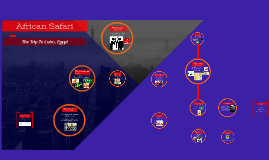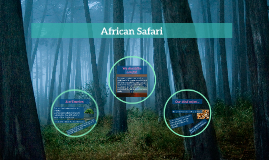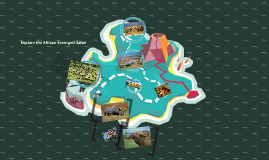African Safari
Transcript: $2,373.54 U.S. dollars or 21,066.83 Egyptian Pound Sources The Trip To Cairo, Egypt We are going to be staying in a luxury home in the city of Cairo, Egypt. What are we using to travel? What type of housing are we staying in? What clothes do you need to pack? What type of transportation will you use once you arrive? You can travel by foot, a car, a bike, or a bus. The bus fair is 1 Egyptian Pound (0.11 cents). The housing that the locals (Cairenes) live in are apartments, hotels, huts, and smaller homes. Only the wealthy can afford to live in free-standing houses because space is difficult to find. Men and women usually live at home with their parents until they get married. Traditionally, extended families lived together, however, with the new situation in Cairo - as houses were abandoned in favor of apartments - the traditional family has given way to the nuclear family. We will need a map, water, clothes, money, and sunscreen. What supplies will we need? How much will your trip cost you in U.S. dollars and local currency? What diseases are prevalent? African Safari The prevalent diseases in Cairo, Egypt are : Travelers' diarrhea, cholera, E-coli diarrhea, and hepatitis A/B. What is the wildlife found in Cairo, Egypt? Muslim and Christianity. The native wildlife are ducks, geese, camels, sheep, armadillo, and tortoises, donkey, pigs, cheetah, goats, snakes, dogs, and llamas. What is the climate in Cairo, Egypt? Petroleum, natural gas, iron ore, phosphates, manganese, limestone, gypsum, talc, asbestos, lead, zinc and water. We will eat Pita Bread, Onions, Fried liver, Stuffed Pigeon, Rice, Green Vegetables and Beans. We will call an UBER, go to the airport, get on a plane, and fly to Cairo, Egypt. The climate in Cairo, Egypt is mainly warm or hot during the day but cool/cold at night time. Cairo undergoes very hot summers with average temperatures of 95 degrees. What are the prominent religions in the area you are traveling to? What natural resources will be encountered. www.Google.com www.Delta.com www.all-about-Egypt.com What type of housing do the locals live in? What kinds of food will we eat? Hot weather: T-shirts, Tank Tops, Hats, Shorts, Shoes Cold weather: Jackets, Pants, Gloves, Scarfs, Boots, Long socks, and a Fur hat

















